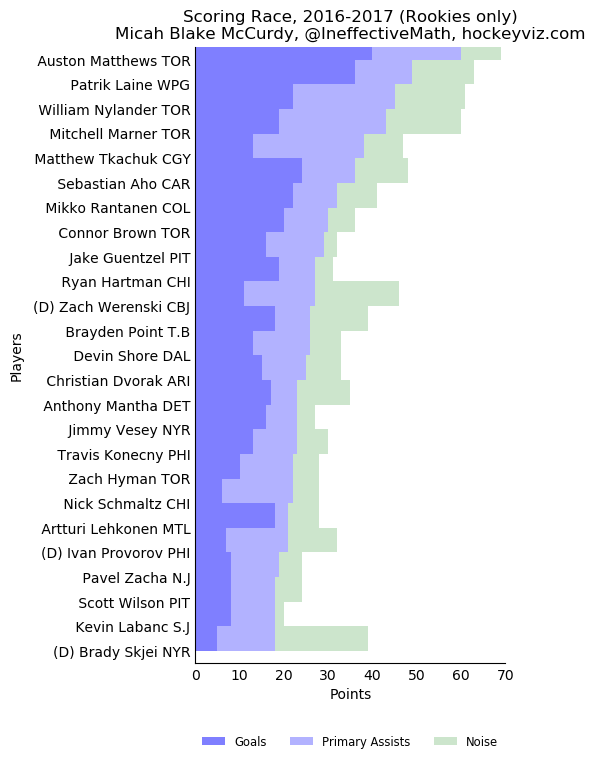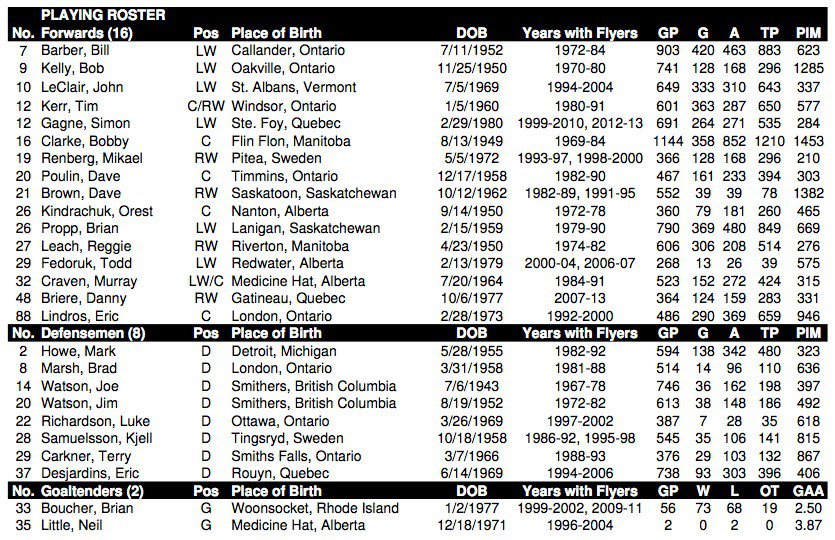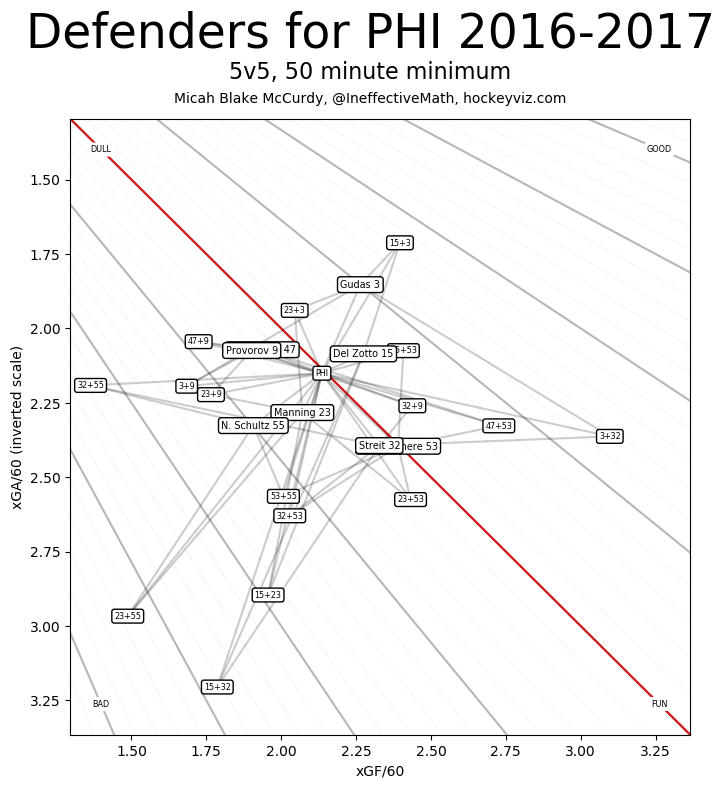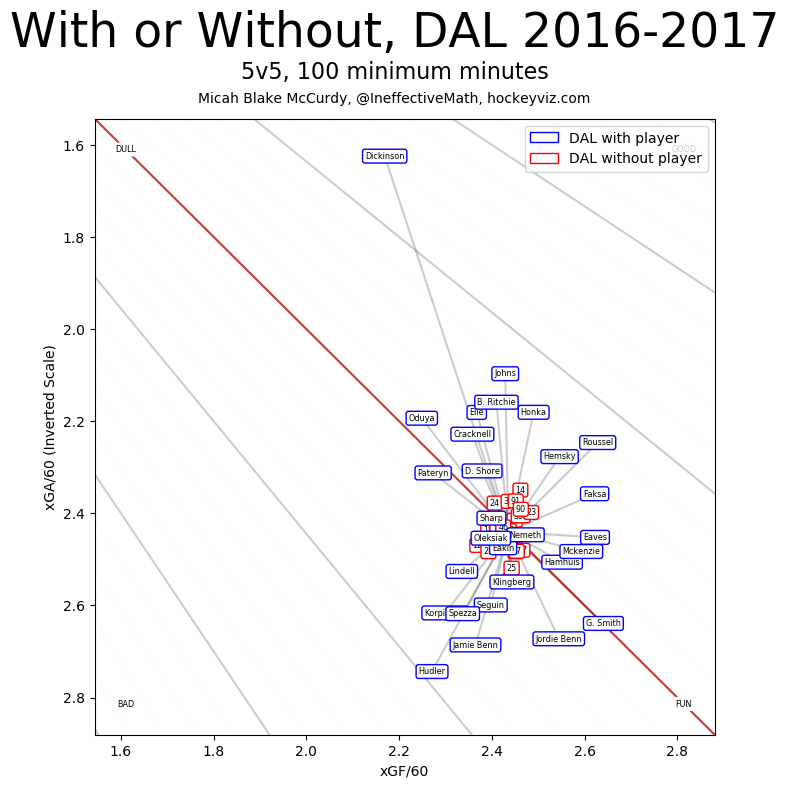It's been a while since we've done a wraparound, and it's also been a while since any meaningful NHL hockey was played. So, to help us get back in the swing of things for the second half of the year, we're going to use this space to look around at the current state of the league.
Normally, I use HockeyViz to provide visuals after we see what's going on with certain teams. Today, I'm going to let HockeyViz dictate which teams we're going to look at. Let's see who's almost certainly a lock for the playoffs:


I'm going to draw the cutoff at the four teams in each conference that haven't needed a recent surge to climb to the top. That leaves us with Minnesota, San Jose, Chicago, and Anaheim out West, and Washington, Columbus, Pittsburgh, and Montreal in the East.
We'll start with the four West teams, and then maybe tackle the East this afternoon.
Minnesota Wild (Hockey Wilderness)
Wilderness Walk: Hockey’s back by mntrumpterguy (link)
There isn't a whole lot of original content on HW today because of the All-Star break, but they do an excellent job of rounding up all of the links in the hockey media world that mention the Wild. Here are some excerpts from the summaries of those links:
A quiet and steady leadership Koivu has guided the Minnesota Wild through the storms of the past and is a reason why they are on top of the conference.
I’m not sure I know where to start with this rendition of the Minnesota Wild. This situation really isn’t normal.
It’s safe to say that the Minnesota Wild have surprised everybody with their success in the first half of the 2016-17 NHL season.
The Wild is one of the best scoring teams in the NHL this season.You might be sensing a common theme there: the Wild are good, and nobody really knows how. Is it really just as simple as Bruce Boudreau being a great coach? Is this like last year's Penguins team that had a ton of talent and just needed someone to use it properly? Let's dive in.

Look especially hard at the Shooting Percentage segment of that visual. If you're consistently scoring on more of your shots than your opponent, you are going to be a successful hockey team (#ThanksCaptainObvious). Devan Dubnyk has been stellar this year, but part of the credit for that success has to go to the Wild's team defense. I mean look at the shots that Dubnyk faces:
That is an enormous blue hole, and it is a marked improvement from last year's team defense (which was not bad by any means):
Minnesota plays the style of hockey that should have them on the road to postseason success, which is why they're second in the Western Conference at +800 to win the Stanley Cup. Now, let's jump to the only team ahead of the Wild in that list.
Chicago Blackhawks (Second City Hockey)
Of fucking course the Blackhawks have narrower odds to win the Cup than anyone in the West. They also had more players in the All-Star Game than anyone in the league. And also more players named to the NHL's Top 100 Players Of All Time list than any other American team. So let's try to make this section as negative as possible.
Morning Bag Skate: Blackhawks limp into NHL All-Star break by Brandon M. Cain (link)
Obviously the word "limp" is used pretty liberally there, because they're in second place in the Central Division with a 9-point cushion over the third place Nashville Predators. Apparently, when you are in the middle of a dynasty, a 2-game losing streak that drops you from first place to second is worth complaining about.
God damn the Blackhawks.
The MBS post did link to a CSN Chicago article about Richard Panik's increased production this year, so let's take a quick look at the future Vegas Golden Knight.
Essentially, Panik spent the first quarter of the season on a line with Jonathan Toews (and sometimes Patrick Kane). He spent the second quarter of the season playing in more of a third-line (fourth-line?) role with Marcus Kruger and Dennis Rasmussen. And in the last five Hawks games before the break, he was paired with Toews again (this time Ryan Hartman was on the other wing).
It should be noted that 9 of Panik's 12 goals (and 12 of his 19 primary points) this season came during the games where he was primarily playing with Toews. Panik is a fine complement to Captain Serious, but Toews is essentially the same player with or without Panik on his wing.
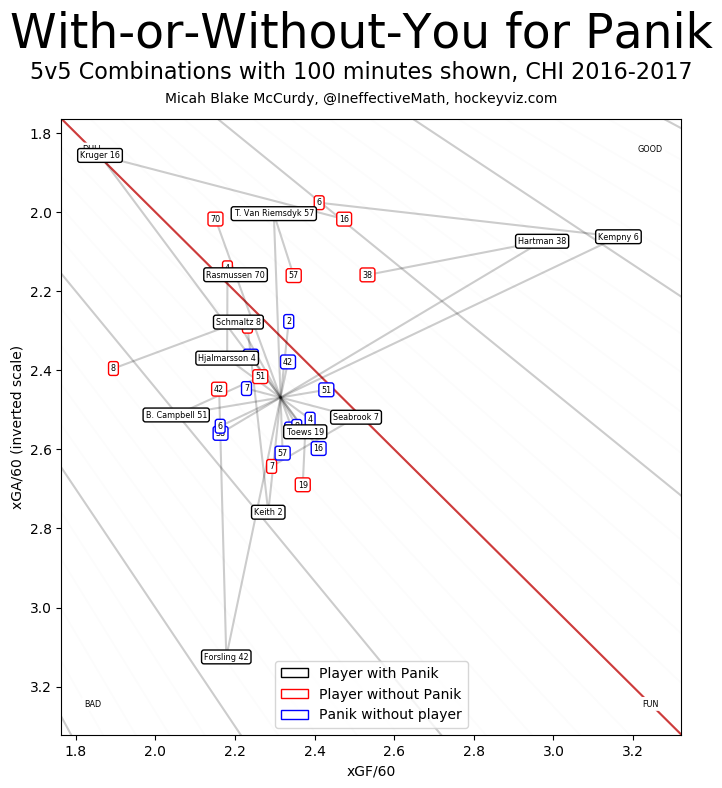
Useful top-nine forwards are never a bad thing, especially for a team like Chicago that can build their top three lines around three Hall Of Famers and the Rookie Of The Year.
But to get back to that Vegas/expansion draft comment I made before, I would be really hesitant to sign Panik to a long-term contract that gives him a significant raise on his current $875k salary. I'm sure he will get a big check from someone, and it will probably end up biting them in the ass because he won't be playing with Jonathan Toews.
San Jose Sharks (Fear The Fin)
One common "trade deadline" thought that seems to be pretty prevalent in the NHL is the Sharks should be buyers at the trade deadline. They're going to make the playoffs, and the contracts of longtime leaders Joe Thornton and Patrick Marleau expire after this season. It would make sense, therefore, for San Jose to go all-in for one last run before they officially turn the page over to the Pavelski-Couture-Burns section of their Wikipedia page.
But let's look at the other side of things.
I feel like this blog could just be "Let's see how shit plays out without overpaying for other people's trash." But Jake really went top-to-bottom here.
..there aren’t many guys who are in San Jose’s budget that would provide an upgrade on the fourth line.. With a fourth line of Timo Meier - Chris Tierney - Melker Karlsson I find it hard to believe there’s a cheap trade out there that makes for San Jose.Before I say anything, I'd like to be clear that I acknowledge that he said he doesn't think it's going to happen, and this post probably kind of spiraled for him at the end.
That leaves a blockbuster; or at least a midsize hit. That’s the kind of move the Sharks should be looking for at this deadline. The kind of move that leaves them with cap flexibility for the next couple of offseasons while helping them out in the upcoming expansion draft, if possible.
The kind of trade I’m talking about is one that sheds a contract like Joel Ward’s or Paul Martin’s, freeing up a spot for one of the young guys with the Barracuda to earn a spot with the team. I absolutely don’t think that’s going to happen, but that’s the kind of trade that I think helps San Jose the most in the long term.
This team is already good enough for a Stanley Cup run. Now’s the time to make sure it’s good for one next June, too.
But trading two veterans before a "last hurrah" kind of Stanley Cup run is maybe the worst front office move I have ever heard in my life. Ward is on the books for $3.275 next season and then he expires. Martin is due $4.85 million for next year and the following, and then he's gone. These are not big cap hits for an extended term.
For reference, Thornton and Marleau's contracts make for a combined $13.4 million coming off the Sharks' books this summer. Even if they both return for one more go-around, they're going to be a hell of a lot cheaper than these contracts they signed in their primes.
The most egregious part of all is Ward and Martin are the two exact kinds of players that fringe contenders try to acquire at the trade deadline. They are both NHL veterans of 10+ years and they have nearly 200 games' worth of playoff experience between them. They're old, sure, but they're still useful players in terms of actual hockey too. Back me up here, HockeyViz:
Now, admittedly, a lot of that hotness in the offensive zone comes from the fact that Martin plays the vast majority of his shifts with Brent Burns (like, actually almost every single minute that Martin plays). But that's not a knock on Martin, because those two are outstanding together.
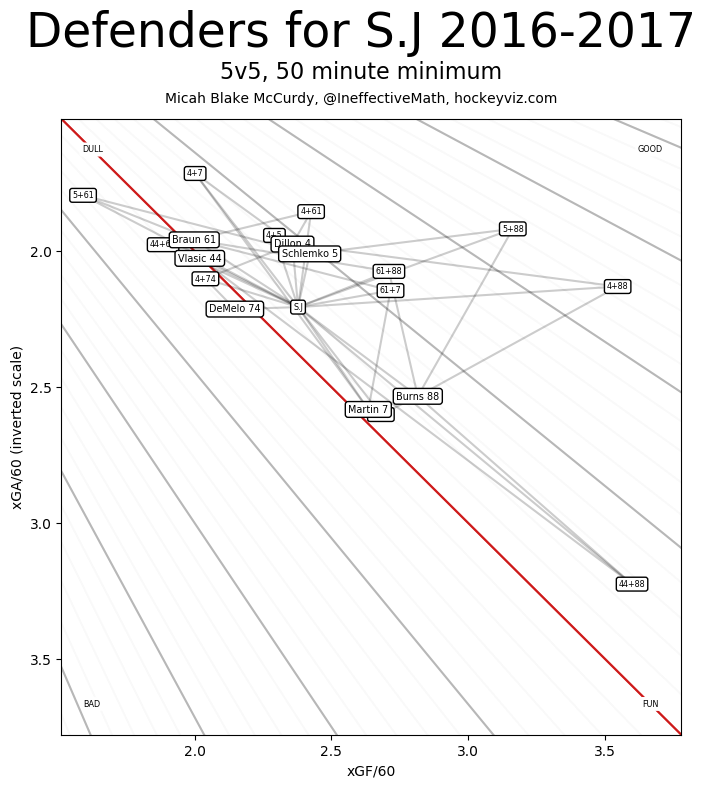
Is a sure-thing partner for your $8 million cornerstone defenseman worth $4 million? Yeah, I'd probably say so. But what about Ward? Why is he worth $3 million next year?
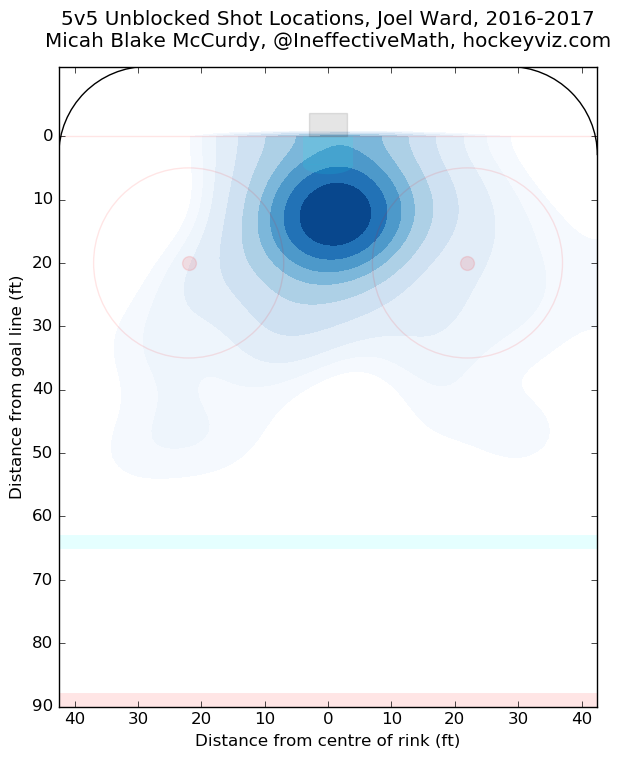

Basically, he's going to stand in front of the net and try to score the puck with pure grit. No stick, no skates, just heart and toughness. He also has the impressive ability to drag fourth-line guys like Matt Nieto, the aforementioned Chris Tierney, and Tommy Wingels (RIP).
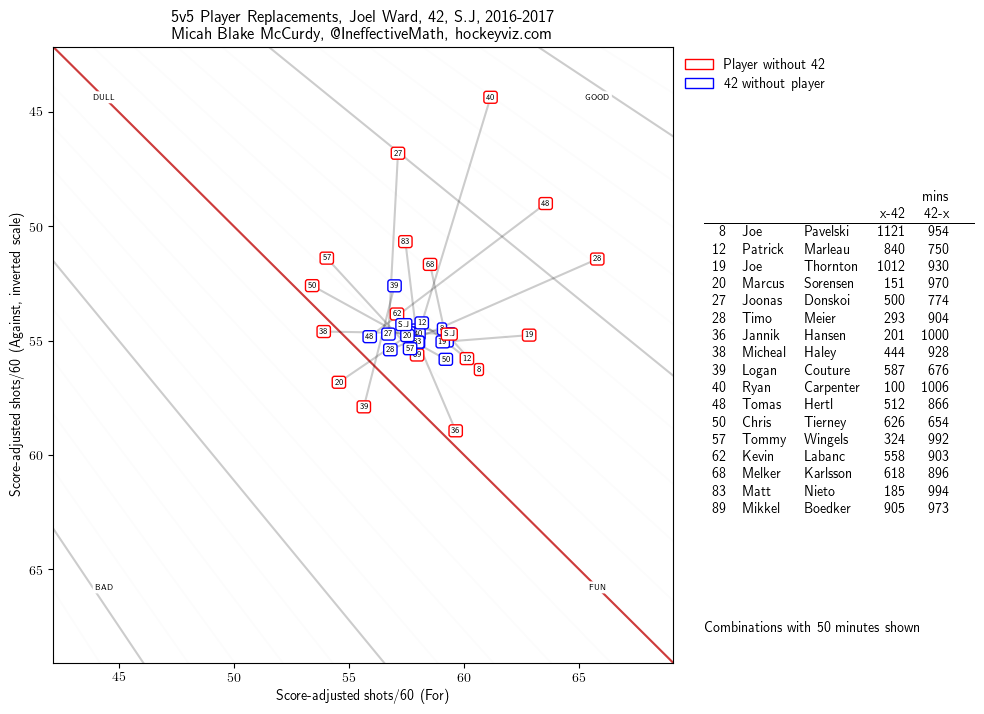
You overpay veterans in the NHL. That's how it works. Joel Ward is, almost certainly, worth more to the Sharks than he would fetch on the trade market. I would like to formally disagree with Jake on the matter of the San Jose Sharks' future.





